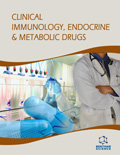Abstract
Amyotrophic Lateral Sclerosis (ALS) is an unknown pathogenesis pro- gressive neurodegenerative disease of the central nervous system that leads to death within 1-5 years. Clinically, it is often possible to find at the level of the lower limbs some clinical manifestations of damage of the I motor neuron with spastic paralysis, iperflexia and clonus, with impairment of the ability of patients' deambulation and their management of the activities of daily living (such as personal hygiene or dressing). So, the first therapeutic approach in these patients are antispasmodic drugs orally and after Botulinum toxin type A injection (BTX-A). Aim of this study is to demonstrate the efficacy of BTX-A in patients with ALS and spasticity of lower limbs no responder to the treatment with oral antispastic drugs with no adverse events. We enrolled 5 patients (3 female and 2 male); they were evaluated at baseline (T0, before BTX- A treatment), and over the following three months with three follow-up visits (T1 30 days after the infil- tration, T2 60 days after infiltration and T3 90 days after infiltration) with myometric measure of tone, Modified Ashworth Scale, Barthel Index, Adductor Tone Rating Scale and Hygiene Score. We treated the adductor muscles (AM) of patients with incobotulinum toxin type A (Xeomin®, Merz) with ultra- sound guide. We obtained an improvement of spasticity with miometric measurement, Modified Ash- worth Scale, Barthel Index, Adductor Tone Rating Scale and Hygiene Score for 90 days after injection (p<0,05). Our preliminary study shows the possibility to use BTX-A in the treatment of the spasticity in patients with ALS no responders to oral antispastic drugs, with no side effects.
Keywords: Activities of daily living, amyotrophic lateral sclerosis, botulinum toxin type A, oral antispastic drugs, physiothera- py, spasticity.
Graphical Abstract
 84
84

